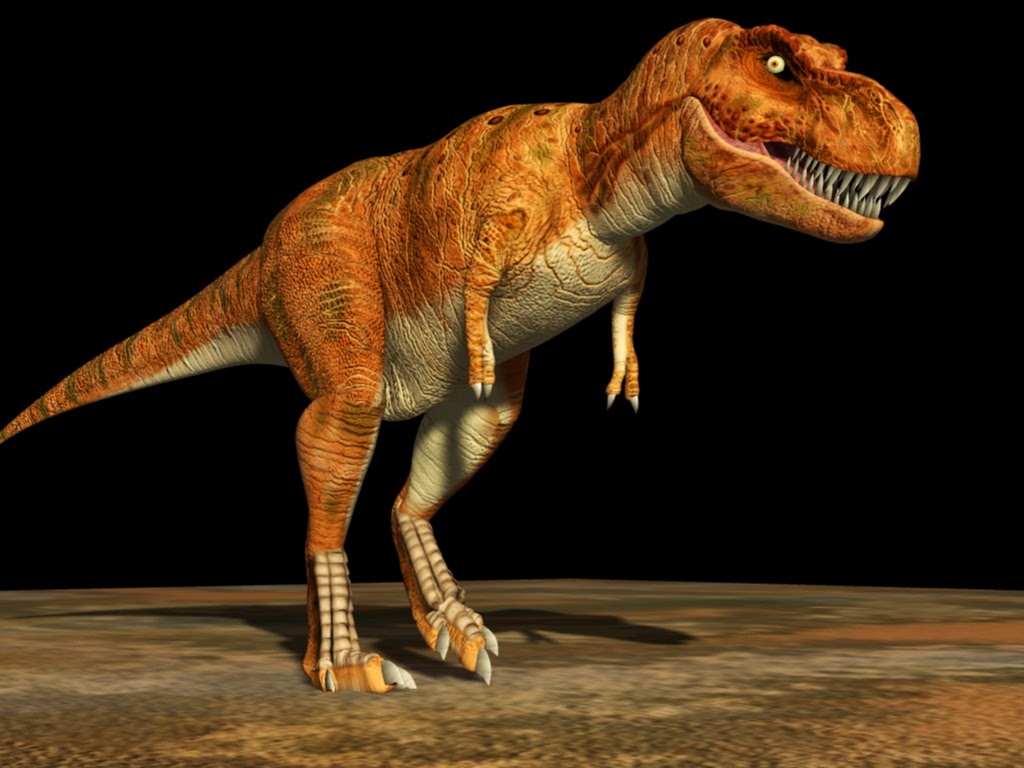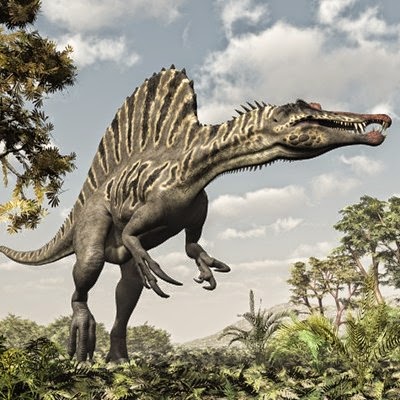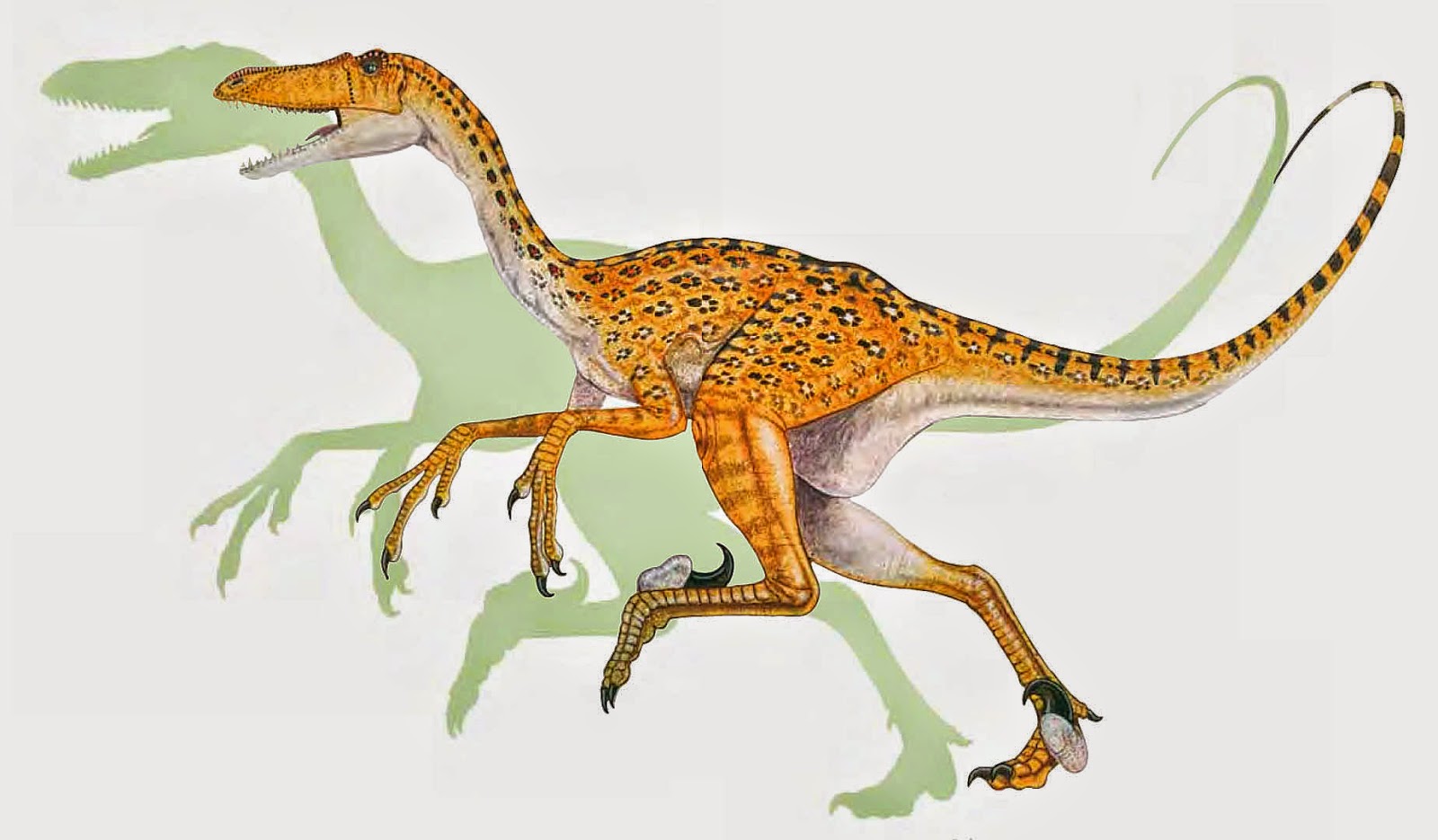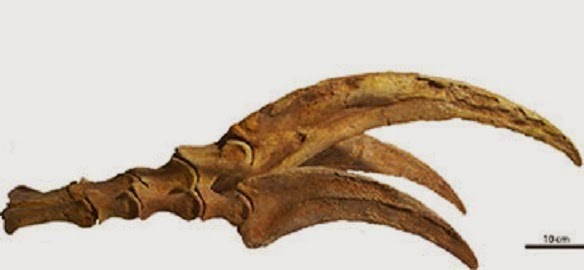 |
| Tirannosaurus Rex |
 |
| Spinosauro |
 |
| Velociraptor |
Theropod dinosaurs, a group which includes such famous species as Tyrannosaurus rex and Velociraptor, are often regarded as carnivorous and predatory animals, using their sharp teeth and claws to capture and dispatch prey. However, a detailed look at the claws on their forelimbs revealed that the form and shape of theropod claws are highly variable and might also have been used for other tasks.
Fossil of the enlarged claws on the forelimbs of Therizinosaurus cheloniformes [Credit: Dr. Stephan Lautenschlager/University of Bristol]
Inspired by this broad spectrum of claw morphologies, Dr Stephan Lautenschlager from Bristol's School of Earth Sciences studied the differences in claw shape and how these are related to different functions. His research focussed on the therizinosaurs, an unusual group of theropods which lived between 145 and 66 million years ago. Therizinosaurs were very large animals, up to 7m tall, with claws more than 50cm long on their forelimbs, elongated necks and a coat of primitive, down-like feathers along their bodies. But in spite of their bizarre appearance, therizinosaurs were peaceful herbivores. Dr Lautenschlager said: "Theropod dinosaurs were all bipedal, which means their forelimbs were no longer involved in walking as in other dinosaurs. This allowed them to develop a whole new suite of claw shapes adapted to different functions."
Illustration showing different claw shapes in therizinosaur dinosaurs and he adaptation to specific functions such as digging, grasping or piercing [Credit: Dr. Stephan Lautenschlager/University of Bristol]
In order to fully understand how these different claws on the forelimbs were used, detailed computer models were created to simulate a variety of possible functions for different species and claw morphologies. The dinosaur claws were also compared to the claws of mammals, still alive today, whose function (that is, how and for what the claws are used) is already known. In the course of evolution, several theropod groups, including therizinosaurs, changed from being carnivores to become plant-eaters. This new study, published in the Proceedings of the Royal Society B, reveals that, during this transition, theropod dinosaurs developed a large variety of claw shapes adapted to specific functions, such as digging, grasping or piercing. Dr Lautenschlager said: "It's fascinating to see that, with the shift from a carnivorous to a plant-based diet, we find a large variety of claw shapes adapted to different functions. This suggests that dietary adaptations were an important driver during the evolution of theropod dinosaurs and their transition to modern birds."
Source: University of Bristol [May 06, 2014]
Read more at: http://archaeologynewsnetwork.blogspot.it/2014/05/new-study-sheds-light-on-dinosaur-claw.html?utm_source=feedburner&utm_medium=feed&utm_campaign=Feed:+TheArchaeologyNewsNetwork+(The+Archaeology+News+Network)#.U2prLih7DfU
Follow us: @ArchaeoNewsNet on Twitter | groups/thearchaeologynewsnetwork/ on Facebook

